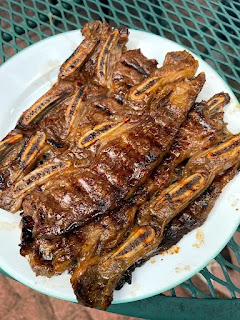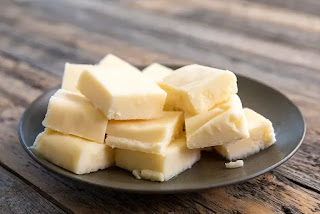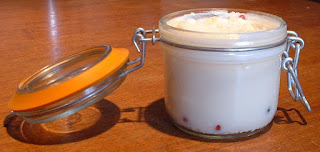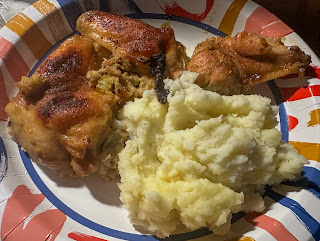We have over the years since retirement becoming more self-sufficient with our lifestyle. We have for many years butchered our own wild game and fish. We have foraged the woods for mushrooms that we dry, preserving for the next winter. This year I went a step further, deciding to try and create/preserve beef tallow and drippings for Au Jus.
Beef drippings are always the by product of a well smoked, wrapped brisket. When finished resting and uncovered the amount of liquid might surprise you. I used to discard this, but now I uncover the brisket in a deep dish pan in order to catch all the drippings.
Once cooled, strain the juice and then place in jar for storage. You can keep this in your fridge for months, but it will probably not last that long once you discover the taste.
Au Jus is used mostly for dipping sandwiches, meat, or to simply pour over your meat. You can make this easily by:
¼ cup beef drippings
1 ½ tablespoons all-purpose flour
2 cups beef broth
salt and ground black pepper to taste
Melt drippings in a skillet over medium-high heat. Whisk in flour and cook, whisking constantly, until the mixture thickens, about 3 minutes. Add beef broth gradually, whisking constantly, then increase heat to high and bring to a boil; season with salt and pepper to taste. Serve alongside your meat dish or sandwich.
Au Jus for the steak
Tallow is a different animal altogether. “Tallow” is a fancy name for rendered fat. Specifically, beef tallow is beef fat that has been cooked down with impurities removed. Tallow is a liquid when heated and a solid when cool, making it a great substitution for oil and butter in recipes.
Tallow used to be used much more often until vegetable shortening and other oils became mainstream, but there is no reason why it can’t be used when cooking at home.
Take all the beef fat you have trimmed from your brisket or other cut and cut into small chunks. You are going to render this down with basically one of three methods. You can do it in the oven at 250F for about 6-7 hours; longer if needed. You can do it in a crockpot on high for as long as needed. Today, I made mine using a deep-dish cast-iron skillet with lid. I placed about 6 chunks in the bottom and turned the burner on low. It takes a while to get the process started, but once going things do move along. Occasionally, I sifted out the chunks that had pretty much rendered out and then added more, a bit at a time. This is important so they don't begin to burn.
Sifting out rendered down chunks
Finished product cooling
When cooled after a day it becomes a solid
Proper storage of beef tallow is crucial to maintain its quality and extend its shelf life. Tallow should be stored in a cool, dark place, ideally in an airtight container, to prevent oxidation and exposure to moisture. Refrigeration is recommended, especially for long-term storage, as it significantly slows down the rate of rancidity, ensuring the tallow remains fresh and usable for several months. If you choose to store tallow at room temperature, ensure its kept away from direct sunlight and heat sources, which can accelerate spoilage. It can last for up to a year. In order to prevent spoilage, use only clean utensils to scoop from your jar.
There are three main nutritional benefits to this type of fat:
>Conjugated Linoleic Acid (CLA): This is a type of fat that’s known for its anti-inflammatory properties, which may help in reducing the risk of heart disease and cancer.
>Rich in Vitamins: Beef tallow is a great source of fat-soluble vitamins A, D, E, K and B12. These vitamins support various bodily functions, from eyesight to bone health.
>Omega Fatty Acids: Omega-3 and Omega-6 fatty acids are essential for brain function, growth, and development. They also aid in reducing inflammation in the body.
"Cooking is about being creative and trying new things".
The Pioneer
WiFi provided by AT & T Wireless



































